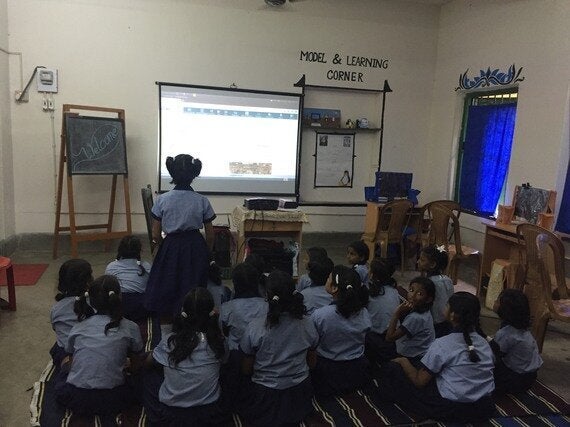"I want to be a lady in a flower shop, instead of selling at the corner of Tottenham Court Road," said Eliza Doolittle. "But they won't take me unless I can talk genteel. He said he could teach me."
At least since the time of My Fair Lady, people in many parts of the world have been willing, wanting, and waiting to learn English to improve their economic and social standing. Unfortunately, few can find an exemplary scholar of Professor Higgins' commitment or afford private lessons.

With India having a British colonial legacy and now being a destination for outsourcing and call centers, one could get the impression that every Indian spoke English. Indeed, the numbers are large but the percentage is small. Some 70 per cent do not speak English. Yet, knowing English is still seen as a key achievement on the path to success. On a practical note, those who know English get better jobs and a recent report showed they earn 34 per cent more. And having been the language of the erstwhile rulers, knowing English still has a certain social cachet.
All this urges even the less affluent to leave aside a free, government-run, public school and, with great effort, pay to go to a private school where English is taught -- sometimes sacrificing the quality of education in the process. There's a common perception that private schools offer better education and more importantly English. This results in anyone who can afford it going to private schools, leaving only the poor and the most patriotic in public schools. But that still leaves some 65 per cent or 150 million children in government schools.
In this age of Internet, massive open online courses or MOOCs are an inexpensive way to learn and that too from good professors from highly rated universities. There are also websites for individualized learning like Khan Academy. However, each student needs access to a laptop and an Internet connection. There are also apps like "Hello English" made by Culture Alley and "Genie" by EkStep, but each user requires a smartphone. Many don't have access to such resources.
Sanjay Gupta, CEO of EnglishHelper, firmly believes that "the focus has to be at the lowest end." So English Helper has joined hands with the government, IL&FS Education, and American India Foundation (with support from USAID) to form an initiative called "Right to Read" and install their English-learning software called "Read-To-Me" (RTM) in some 5000 government schools, in eight states, impacting some one million children in grades one through eight. The project began in 2013 and is expected to finish by the end of 2017.
One critical strength of RTM is that it uses mostly existing structures -- existing schools, classrooms, teachers, textbooks, and of course, eager students. The only extra resources required are a laptop, a TV or projector, a screen, and two speakers -- which many schools often have. Because some schools do not have internet connection or their connectivity is unpredictable, they are given DVDs with their grade-specific English textbooks on a RTM platform. The teachers are given a few hours of training, either in person or over Skype. Gupta explains that teachers are taught not just now to use the software, but also critical language learning principles and how to incorporate the software into their class.
One page of the textbook is projected on the screen at the front of the class. And together, with the teacher controlling the software, the teacher and the students work through the contents. A voice in an Indian accent vocalizes the text while the particular text being said is highlighted on the screen. The teacher can also use the software's other tools, such as the dictionary, picture dictionary, and vernacular word list to provide further explanation for students.

Teachers say that students are interested in using the RTM software for several reasons: they want to learn English; they are attracted by the AV aid; they are able to better understand how to say a word and a sentence, with its stresses and pauses; the audio can be played several times until they get the pronunciation right; and the multisensory approach enables easier and faster learning.
Furthermore, teachers say that the repeated vocalization in a group setting, with the support of teachers, the software, and other classmates, gives the students confidence in speaking English. In fact, the software is helpful for both students and teachers. "In some lesser-resource schools, often the Social Studies teacher is also teaching the English class," explains Gupta. "So by using the software, the teacher herself is learning some English in the process." The software interests, motivates, and teaches both students and teachers.
Helping to teach English to 1onemillion children may just be a start. Priya Viswanath, SVP of EnglishHelper India says, "Our goal is to expand and cover as much ( all if possible) of the government schools foot print in the country, thus reaching over 150 M children faster than any human resource based intervention can."
Gupta is even more ambitious. He sees the RTM software as not just a tool to solve English learning issues but a tool to solve literacy issues in general. He's next planning to introduce a Hindi version of the software. And why not? The value of the RTM software and the Right to Read initiative lies in its scalability. India may have a demographic dividend but, to make the most of that, such scalable social projects are essential.

If only Professor Higgins had had such a tool, Eliza may have actually enjoyed learning and Higgins could have more rapidly uplifted many, many Eliza Doolittles.
Follow HuffPost Canada Blogs on Facebook